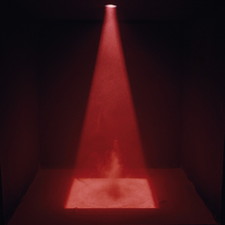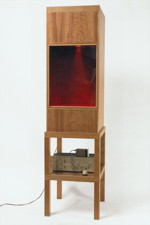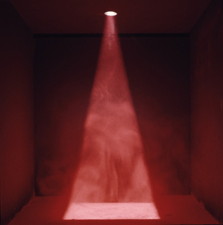1968(Edit)
The Machine as Seen at the End of the Mechanical Age
Artists :(Edit)
- Jean Dupuy, Heart Beats Dust - Cone Pyramid (1968)
- → [related event]
- → [related event]
   Jean Dupuy, "Heart Beats Dust" - "Cone Pyramid" (1968) In a black rectangular box, a window at eye level opens onto a 24' cube which houses the sculpture. The form is created by thrusting dust up into a cone of light. The dust is Lithol Rubine, a brilliant red pigment chosen for its ability to remain suspended in air for long periods. The thrust is achieved by amplified heart-beats from an attached stethoscope or a continuous loop tape recording of heartbeats played on a speaker mounted directly under a tightly stretched rubber membrane upon which the dust sits. — (Pontus Hulten) Source : http://www.medienkunstnetz.de/works/hearts-beats-dust/ Heart Beats Dust was the winning entry in a competition for collaborations between artists and engineers entitled E.A.T. (Experiments in Art and Technology) which also anticipated major initiates by organisations such as Xerox with their PAIR program and HP Labs with their Creative Residencies. A second version of the work has been shown also at MoMA in "The Machine as Seen at the End of the Mechanical Age", the now legendary show organised there by Pontus Hulten. |
Powered by LionWiki 3.2.5 — Thanks to Adam Zivner — Any material is under copyleft © with in-line & in-text attributions — Hosted by nujus.net NYC